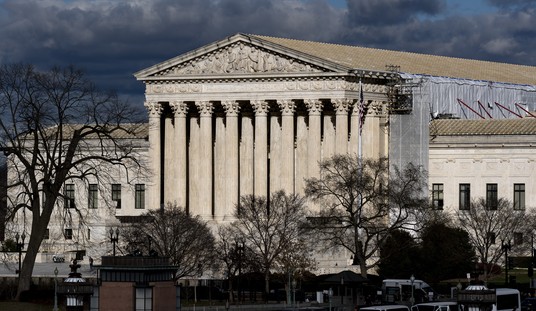This blame-the-victims talking point they’re workshopping is going to play very, very badly for them. And the worse the situation gets, the worse it’ll be received.
Particularly since the U.S. government’s official line about the urgency of evacuating was, shall we say, on the muddled side right up until the Taliban arrived at the gates of Kabul.
How many Americans in Afghanistan were mulling whether to heed State’s warnings and depart when they watched this Biden presser on July 8 and felt reassured in staying put?
Joe Biden on July 8, 2021 — so, just over one month ago.pic.twitter.com/n9DhN6SKut
— Jerry Dunleavy (@JerryDunleavy) August 15, 2021
Maybe the Afghan army would hold. And even if it didn’t, it would likely hold long enough to allow for an orderly evacuation in which all U.S. citizens would be safely removed. That’s what the president thought.
It’s not as if the Taliban was going to overrun the country in the course of a weekend, right?
Incredible. Secretary of State Blinken tells @RepMcCaul that there’s nothing to worry about regarding Afghan interpreters and Special Immigrant Visas because they’ll have time to process them even after withdrawal and everything is gonna be fine. pic.twitter.com/dbKyqDJzW6
— CasualtiesOfTheDay (@Ayei_Eloheichem) June 17, 2021
Fast-forward two months and here we are, with U.S. citizens stranded in the country watching people get blown up outside Kabul airport and having this guy cluck his tongue and say shouldn’t have waited:
Top U.S. diplomat says the State Department put out repeated warnings every three weeks to Americans in Afghanistan telling them to leave since April: “People chose not to leave. That's their business," Ross Wilson said. pic.twitter.com/hr5HlLxA0F
— CBS Evening News (@CBSEveningNews) August 26, 2021
Hopefully most Americans in Afghanistan have made it out already. Most, I stress, but not all: As of yesterday an estimated 1,500 were still on the ground and this morning’s horror outside the airport ensures there’ll be even less time to get them out than we’d hoped. They’ll have to be ransomed after we’re gone, assuming the Taliban is willing to accept a bribe to let them go. Beyond U.S. citizens there are an unknown number of U.S. green-card holders, a group Jim Geraghty noticed has been conspicuously ignored in Team Biden’s daily briefings. How many of them are left to remove? Geraghty heard about one case from a reader:
While everyone is a high priority on my desk — the toughest one is this. One of our schedulers — a computer software whiz — got his green card and permanent U.S. residency back in 2017. His Afghan parents disapproved and would not let him take his wife and six children to America, but his wife told him to go anyway and send money back home. He did — lots of it. He works for a large energy company on the east coast and makes a good living. In early July, he realized the country was doomed. He flew back to Afghanistan to get his wife and kids. They needed visas to get out. He tried to navigate the interview and paperwork zoo at the U.S. embassy in Kabul — but it was taking forever, and then the embassy closed the visa window. He is now stuck. He can’t get out with his family, and he won’t leave without them. Three hours ago, he texted me. He said he tried to get to the north side of the airport. He ducked around Taliban checkpoints and couldn’t even get close. He said the road is mobbed with “thousands and thousands of Afghans. It’s like they’re trying to escape a burning building and all the doors are locked.” He said there is no way he could get his children through the mob to get to the gate. We are formulating plans to have him drive to Tajikistan or Pakistan for an airlift. He said, bitterly, if only I could get them to Mexico.
Then there are the Afghan friendlies who assisted U.S. troops for 20 years. How many are left and aren’t getting out? Lots. Lots.

Some estimates on the higher end are that a million Afghans might qualify to be relocated outside Afghanistan. Most will never have the chance. Many will be murdered once the Taliban accesses the information we left behind to identify them.
They chose not to leave sooner, though, right? That’s their business.
There’ll be many casualties from this failure, not limited to those who were abandoned behind enemy lines. Some who were ordered to abandon them will struggle as well. I’ll leave you with this.
Canada’s acting Chief of Defense Staff General Wayne Eyre announces the country has ended evacuations from Kabul’s airport:
“The feeling of helplessness and guilt that arises from having to leave people behind can be overwhelming …” pic.twitter.com/SkZFNADujv
— The Recount (@therecount) August 26, 2021








Join the conversation as a VIP Member